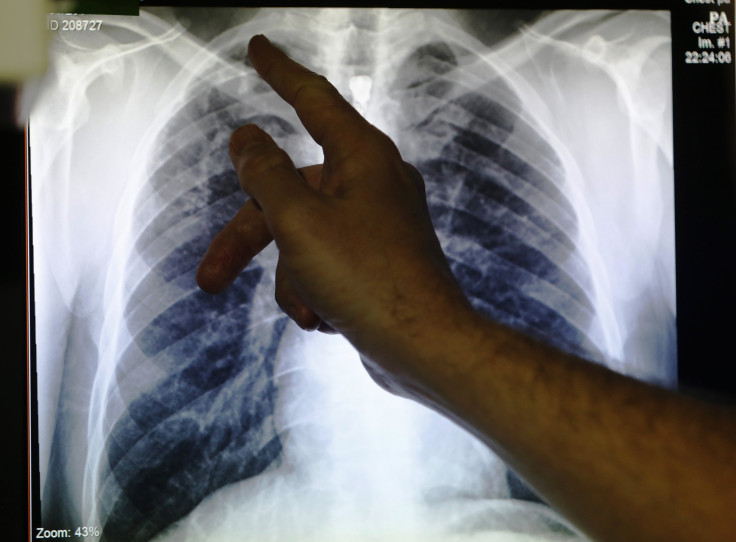US Saw An Uptick In Tuberculosis Cases In 2022, CDC Data Reveals
KEY POINTS
- TB cases increased in 2021 and 2022 after a decline in 2020
- The TB incidence may be returning to pre-pandemic levels
- Certain groups saw "considerable increases" in TB cases
The U.S. saw an uptick in tuberculosis (TB) cases in 2022, according to data from the U.S. Centers for Disease Control and Prevention (CDC). "Concerning" increases show the need to take action against the disease.
The cases of TB in the U.S. declined albeit gradually from 1993 to 2019, the new report from the CDC noted. However, 2020 saw a "substantial" 20% decline in cases, coinciding with the pandemic, dropping from 2.7 cases per 100,000 people in 2019 to 2.2 cases per 100,000 people in 2020.
Though this may seem like good news, there were reportedly concerns among experts about missed or delayed TB diagnoses. When it comes to TB, late detection may increase the risks of spreading the disease to others and of having poorer health outcomes.
Cases increased a bit (by 9.8%) in 2021, and new data shows that the trend continued in 2022, which saw a 5% increase. The 50 states and Washington, D.C. logged 8,300 cases in 2022.
Both the 2021 and 2022 numbers are still lower than the pre-pandemic levels, the CDC said, though the increases show that TB incidence is returning to it.
New data on tuberculosis (TB) from @CDC_TB show that the U.S. reported 8,300 #TB cases in 2022.
— CDC (@CDCgov) March 23, 2023
Read more in @CDCMMWR: https://t.co/rz5rKQNh3O #WorldTBDay pic.twitter.com/4DTjcU9nLN
There are certain groups that saw "considerable increases" in cases. These include children aged 4 and below, which the agency said to be "particularly concerning" because such cases usually stem from recent transmission rather than reactivation of latent TB — the condition when the germs are in a person's body but the individual is not sick because the germs are not active.
"The increase in TB incidence among children aged ≤4 years might represent both recent transmission in the United States and infection in countries with higher TB incidence," the CDC noted in the report.
Those who were incarcerated also saw increases in cases, showing the need for efforts to prevent outbreaks. So did individuals belonging to certain racial and ethnic groups, including Native American or Alaska Native and Native Hawaiian or other Pacific Island people.
On the other hand, there was a slightly lower incidence of TB among those aged 65 and above, though this may be attributed in part to the higher COVID-19-related deaths in the age group.
"TB disparities persist; addressing these disparities requires timely TB diagnosis and treatment to interrupt transmission and prevention of TB through treatment of latent TB infection (LTBI)," the CDC noted.
About 80% of the U.S. TB cases are of a reactivation of latent TB, the CDC added. People with latent TB don't have symptoms, and they can't pass the germs to others either. However, they may develop TB disease in the future. This is why they are prescribed a treatment regimen to prevent TB disease — something that the CDC is recommending along with testing among the populations at risk for LTBI.
The good news is that newer TB treatments have become "less burdensome and more accessible."
As TB incidences seem to be on the way to returning to pre-pandemic levels, the fight against TB is on again to stop transmission and prevent the reactivation of latent TB.
And the fight against TB is a global one. In 2022, the World Health Organization (WHO) also sounded the alarm on the global TB situation, with cases being on the rise. According to the agency, it could "once again be the leading cause of death worldwide from a single infectious agent, replacing COVID-19."
"The message is loud and clear – TB is still here. For the second year in a row, TB disease cases in the U.S. have continued to rise, with concerning increases among young children and other groups at increased risk for TB disease," Philip LoBue, director of CDC's Division of Tuberculosis Elimination, said in the agency's media release. "Communities, providers and public health partners must work together to make sure we are reaching the right people with testing and treatment, so we can prevent and stop the spread of TB."

© Copyright IBTimes 2024. All rights reserved.






















